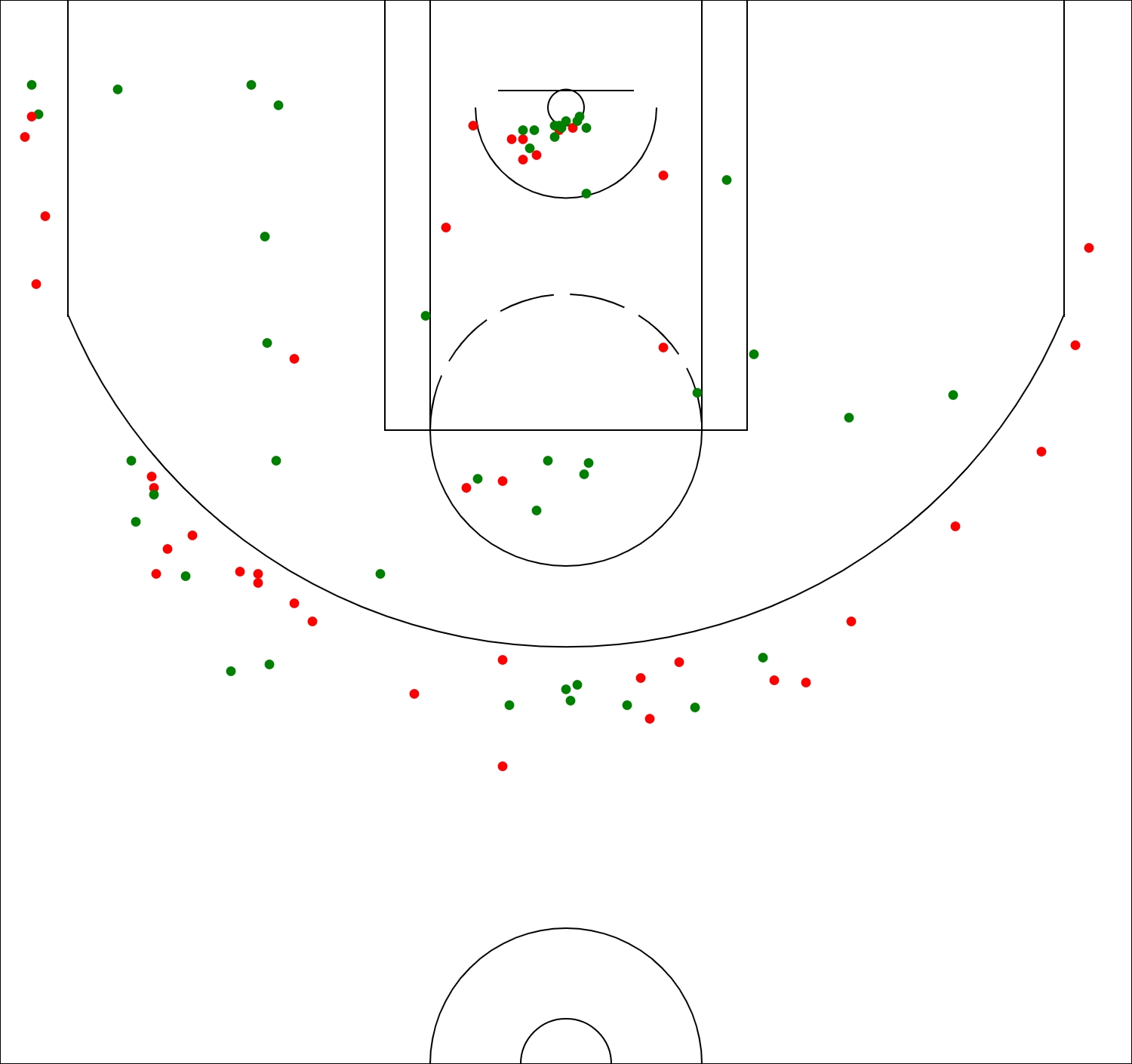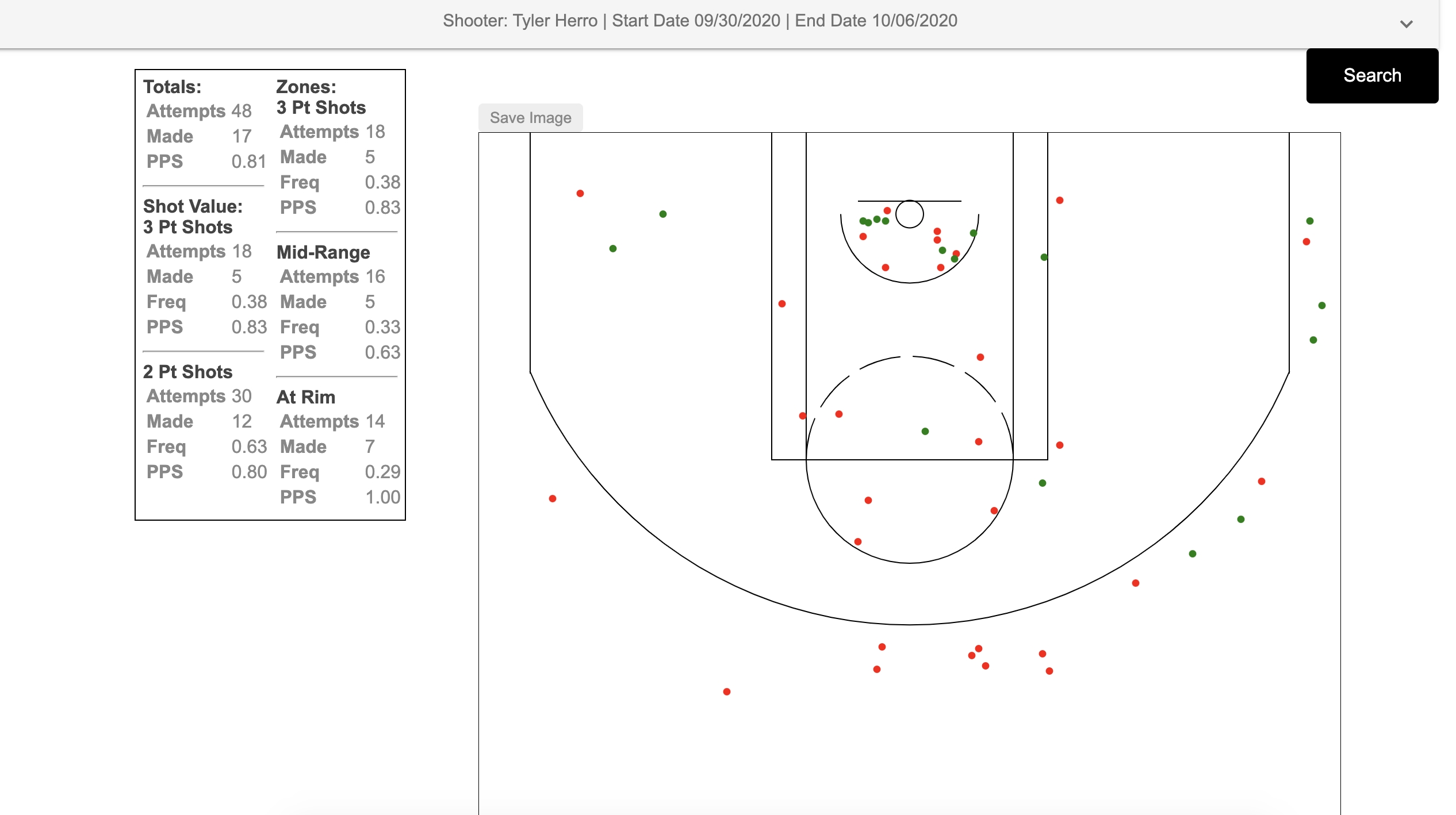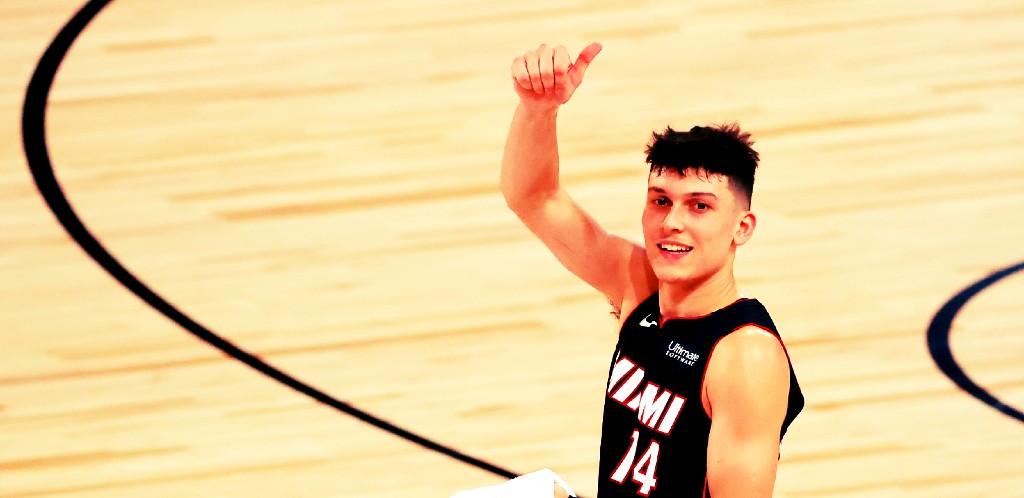Before we begin, a disclaimer: Tyler Herro is a rookie. He’s a rookie in the strangest NBA season we’ve ever seen, yes, but at the end of the day, Herro is yet to wrap up his first year of being a professional basketball player. What he has managed to do for the Miami Heat on the team’s playoff run in spite of the fact that he is so green behind the ears — especially because the Heat have multiple players with All-Star/All-NBA/playoff appearances under their belts and they’re a franchise that is a true meritocracy — is remarkable.
Having said all of that, Herro’s performance against the Boston Celtics thrust him into the spotlight for Miami this postseason. Mind you, Herro played well in the team’s opening two series, but against the Celtics, the former Kentucky product was able to take his game to another level. In the most Bill Nye the Science Guy voice you can muster in your head, consider the following:

The surprise here is not that the Los Angeles Lakers have put the clamps on Herro thus far. We’ll get into this momentarily, but the fact that he has struggled against L.A. makes all the sense in the world for a few factors. If anything, it’s a little surprising how good he played in each of the first three series, particularly against a very, very good Celtics team which had a top-5 defense this season and didn’t bother him all that much. He was third on the Heat, behind only Goran Dragic and (very narrowly) Jimmy Butler, in usage rate during that series, and he delivered by scoring and facilitating in a way that made him look like a legitimate budding star.
The Heat did a very, very good job of using Herro as a complimentary piece in the first two series, where he thrived. The Pacers are a pesky defensive team, but one that just did not look like themselves all series without Domantas Sabonis. While the Bucks were the best defense in the league, they hung their hats on protecting the paint and gave up a ton of threes. Lo and behold, a tick under 59 percent of Herro’s shot attempts against Milwaukee were threes, his high-water mark for a series this postseason, which was accompanied by his best shooting performance in any series.
Against Boston, Herro’s shooting from deep fell off, but he was a monster on shots inside the three-point line. Herro connected on 69.8 percent of his twos — you do not need me to tell you that is astoundingly good, but for context, the best player in the league this year on twos was Mitchell Robinson of the Knicks, who connected on 74.2 percent of his attempts from inside the line. If Herro were to have kept that number up all season (and, to be clear, I do realize how silly this is, just bear with me), it would have been second in the league.
Against Boston, Herro’s shots were 50/50 between twos and threes. He was just way, way better at connecting on twos, and was quite comfortable at putting the ball on the deck, getting to his spot, and pulling up — per NBA.com’s tracking data, 38 of the twos he attempts in that series came off the bounce. An even crazier number: NBAShotCharts.com says that Herro was good for 1.33 points per shot against the Celtics at the rim on 18 attempts and 1.44 PPS on 25 mid-rang attempts.

It should not come as a surprise that another element of Herro’s game, setting up teammates, flourished in this series. Inherently, players who have a gravity about them make things easier for their other teammates, especially when they can find them. That hasn’t always been something Herro’s been great at, but he’s gotten better at it. It helped that the Heat surrounded him with three other good-to-very good passers — Bam Adebayo, Butler, Dragic — so he did not have to shoulder the creative load. As a result, all four players posted an assist percentage of at least 20.3 percent against the Celtics.
The adage “pressure turns coal into diamonds” applied to Herro against Boston. Against Los Angeles, however, pressure hasn’t exactly been kind to him. It has to be mentioned that Miami not having Dragic probably hurts Herro more than anyone else. The role that maximizes what he can do, right now, is as an option on the perimeter who has a symbiotic relationship with Butler and Dragic. The stuff they can do helps him, the stuff he can do helps them, the cycle continues unabated. But with no Dragic, asking him to take on more of the Dragic role, or asking him to stick in his same role while someone like Kendrick Nunn — who is, to put it very charitably, not Dragic — is on the floor makes life more difficult on him. As such, here we are:

Herro’s offensive upside means he is a guy worth keeping on the floor, even through these struggles, even while being pestered by an elite Laker defense, and even while he’s had the team’s worst defensive rating in this series. They need someone who can bring the stuff he can bring on offense, he just hasn’t gotten to that point. Los Angeles deserves plenty of credit here — they have made him take twos (62.1 percent of his attempts in this series), they are making him put the ball on the floor, and he is getting acquainted with the Lakers’ myriad of defenders, with guys like Kentavious Caldwell-Pope, Alex Caruso, Danny Green, and Rajon Rondo all taking turns bugging him.
Without Dragic, Herro has been thrust into a bigger role in this series. While it’s not fair to put this much weight on a rookie’s shoulders in an NBA Finals matchup against a team that has LeBron James, Herro raised the bar for himself with his performance this postseason, especially with what he did against Boston. But as he’s been given the ball more and needed to do more, he has struggled, with his ability to score and his ability to set up his teammates both falling off a cliff. Getting him going could be big for Miami if it hopes to turn the tables on James and come back from a 3-1 deficit against him. If he can’t, the Lakers are going to be champions for the 17th time in their illustrious history.







